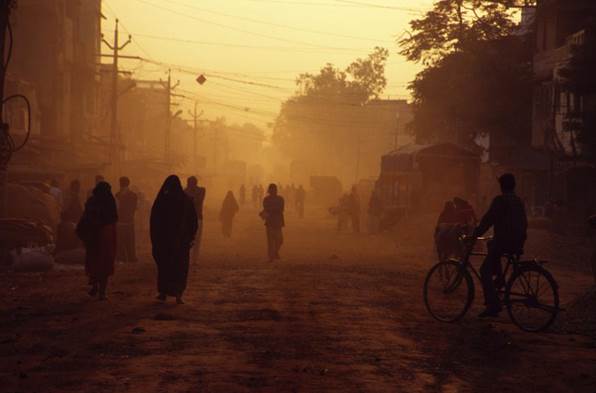Description

Copyright infringement not intended
Context: India’s regional weather patterns and topography makes the country highly vulnerable to aerosol pollution, a new study found.

Details:
- Excess infant deaths due to aerosols in India were estimated to be three million — the highest among eight regions evaluated in the study.
- Crop output declined 12.5 tonnes due to aerosol pollution, the study published in Science Advances
- Aerosols such as black carbon, organic carbon, carbon monoxide, nitrogen oxides, volatile organic compounds and sulfur dioxide are known to hurt the climate and human health. They stick around in the atmosphere for weeks.
- These short-lived pollutants can inflict different levels of damage based on where they originate.
- India, for example, faces higher impacts on infants and crop productivity because “aerosols that are emitted in the country are also much more likely to stay local because of regional weather patterns and topography
- Regional weather patterns can determine how far the aerosols travel from the place of origin. Also, the Himalayas partially act as a geographic barrier to ventilation.
- The country is also vulnerable to global aerosol emissions.
- Because of where India is in the global atmospheric circulation, emissions from other regions can more easily change the temperature and rainfall patterns in India.
- Adding to this is India’s large and vulnerable infant population and extensive areas under agricultural production. Together, they lead to more considerable societal damage.
- China and India are currently the largest sources of aerosol emissions. Indonesia, East Africa, South Africa and Brazil are projected to see an increase in aerosol emissions.
- The findings state that India and East Africa had the highest number of infant deaths from aerosols.
- Aerosol emissions hit the GDP of the United States and China the most, the analysis showed. For India, the researchers recorded economic benefits. These pollutants can have a cooling effect as they reflect sunlight into space, according to NASA.
- Studies have shown a link between temperature and maximum economic productivity. Hot countries like India benefit from a little cooling.
- A slight dip in temperature can help boost the growth of temperature-sensitive crops like wheat
- Aerosols emitted with carbon dioxide can increase the social cost, an estimate of the economic costs of greenhouse gases, by as much as 66 per cent.
- Aerosols are defined as a combination of liquid or solid particles suspended in a gaseous or liquid environment.
- In the atmosphere, these particles are mainly situated in the low layers of the atmosphere (< 1.5 km) since aerosol sources are located on the terrestrial surface.
- However, certain aerosols can still be found in the stratosphere, especially volcanic aerosols ejected into the high altitude layers.
- The origin of atmospheric aerosols is either natural or the result of anthropogenic activities.
- Natural sources of aerosols include sea salt generated from breaking waves, mineral dust blown from the surface by wind, and volcanoes.
- Anthropogenic aerosols include sulfate, nitrate, and carbonaceous aerosols, and are mainly from fossil fuel combustion sources.
https://www.downtoearth.org.in/news/environment/aerosol-pollution-has-huge-impact-on-india-s-infant-mortality-crop-productivity-study-85112












